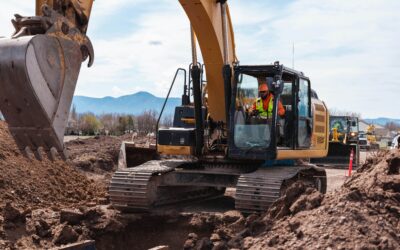Executive Summary. In construction, there are more ways to make money than by increasing production. Find other ways to affect the bottom line without swinging a hammer faster, or even getting more efficient tools.
Simple business math. Business is “simple” – you simply need to collect more money than you spend. Notice there are two variables here: collect and spend. The difference is profit. So, for example if you collect $10 and spend $9, your profit is $1. To increase profit in this scenario you must either increase collection to $11 (profit is now $2) or decrease the spend to $8 (profit is, again, $2).

Making money in construction is often times not an easy task. But there are ways to affect the bottom line, even outside of the direct work.
Ten ways to increase profit (not by increasing production). Here are ten ways to either increase the collection or decrease the spend:
- Pay Net 10, 2% (or something similar) – pay at a discount when paying quickly. For example, if an invoice comes in for $100,000, with these terms you’re paying only $98,000 and you’ve spent $2,000 less.
- Invest in bonds – a good surety will allow you to invest your cash in something other than the big bank savings account. Bonds are liquid enough to keep your surety comfortable, while offering higher returns and/or tax breaks.
- A good credit card points system – pay for things on a credit card which has either a rich cash back program or a convenient points/mile system.
- Hold money in brokerage savings account – if you keep money in a brokerage savings account (like Morgan Stanley or Merrill Lynch), they can offer higher paying interest rates than big banks.
- Certificates of deposit (CDs) – these are common savings vehicles at the local bank, but be careful because your money is tied up for a fixed duration.
- Get paid asap to invest – push on your clients to pay you quickly. I don’t mean call there twice a week and harass the A/P staff, I mean invoice often, correctly, and clearly. If the client allows invoices weekly, do it. If the client needs an excessive amount of paperwork in order to process your payment, include them and don’t fight it. The quicker you receive the money, the quicker you can put it to work.
- Don’t borrow on the line of credit – just because there’s a million dollars out there on your equipment line, or your operating line, this money is not free. It may be at prime rate + 2% and that’s miles away from cheap and light years away from free. This money costs money. Use sparingly.
- Don’t buy new stuff, maintain – do you really need that new $85,000 pickup truck? Can’t your current truck make it another three years with some new tires and a brake job?
- Decrease your EMR (Experience Modification Rate) – each year your insurances renew and one of those line items on your worker’s compensation quote includes a discount, or not, for your EMR rate. If your EMR rate is low enough, your insurer may provide a discount on your premium.
- Taxi, don’t rent cars – this depends on your travel destinations, but if you conduct the in-house research you may find that a year of taxi or ride share is significantly less than car rental.

My story. I did most of these things with my own company, and #10 was the rule at the last company I worked for – they must have done the research to determine that it reduced the spend.
The biggest challenge with the brokerage or bank options above is having the spare cash. There were times when I was cash rich and could afford to park money, but that doesn’t always last. Talk to your banker or broker and make sure he/she knows that the money may have to come out fast – and define “fast” for them (maybe it’s six months, maybe it’s six days). Although savings accounts are wholly liquid, it may take days or weeks to sell your bonds.
Work safe!






0 Comments